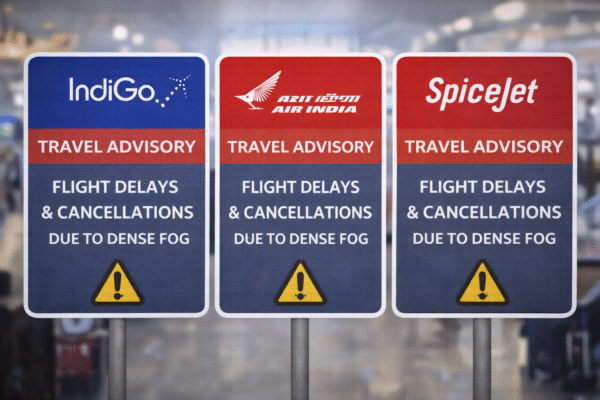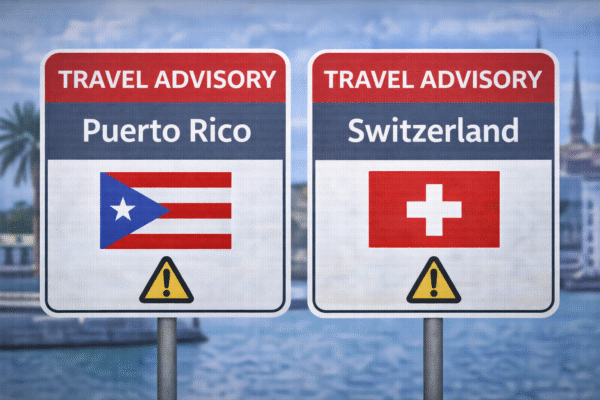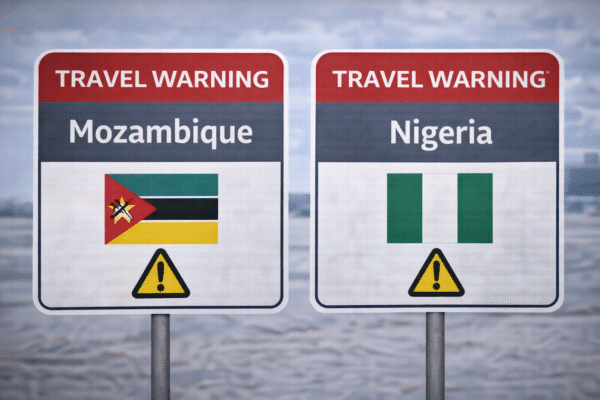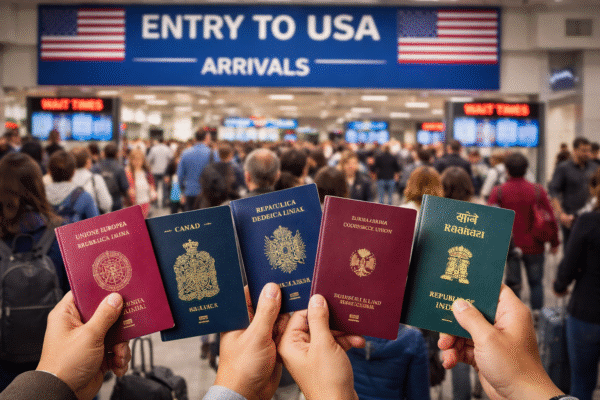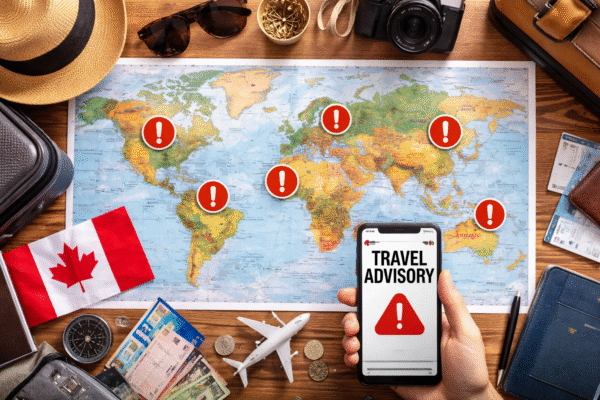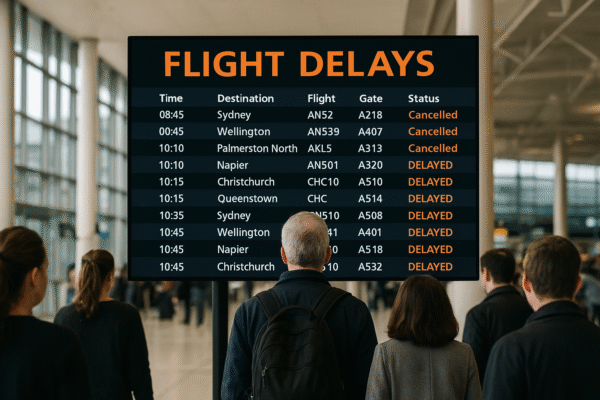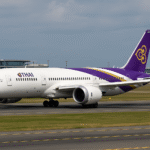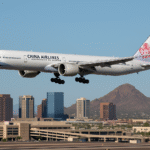Thousands of passengers across New Zealand faced major disruptions after Air New Zealand was forced to cancel five scheduled flights and delay more than 150 others. The nationwide setback created frustration and uncertainty, particularly at key hubs including Auckland, Wellington, and Palmerston North airports. Many passengers were left stranded, while others endured extended waits, missed connections, or had to seek alternative travel routes.
The disruption, largely attributed to poor weather conditions, underscored how quickly air travel can be thrown into turmoil when visibility and safety are compromised. From grounded flights to crowded terminals, travelers experienced one of the most significant operational challenges Air New Zealand has faced in recent months.
The Scale of the Disruption
On a single day, Air New Zealand grounded five flights entirely and delayed well over 150 across its domestic and regional network. The cancellations occurred during morning schedules, meaning many passengers learned of changes only after arriving at the airport, ready to check in for their journeys.
Auckland International Airport, New Zealand’s busiest air hub, bore the brunt of the impact, while Wellington and Palmerston North also saw extensive disruptions. In addition to these hubs, regional airports experienced knock-on effects, further complicating travel for passengers with multi-leg itineraries.
With some delays stretching from a few hours to nearly half a day, the ripple effect extended to international connections. Routes to destinations like Sydney and Queenstown were impacted, further heightening frustration among passengers who had international or holiday plans dependent on precise schedules.
Canceled Flights and Affected Routes
The cancellations were spread across domestic routes, impacting connections between major cities and regional centers. Among the most significant were:
- Wellington to Christchurch (Flight ANZ5389)
- Auckland to Palmerston North (Flight ANZ5579)
- Napier to Auckland (Flight ANZ5010)
- Palmerston North to Christchurch (Flight ANZ5181)
- Christchurch to Wellington (Flight ANZ5348)
For many, these cancellations disrupted not just leisure travel but also business commitments, family visits, and time-sensitive plans. With morning flights grounded, entire travel days were thrown off course.
Passenger Frustration and Travel Challenges
The human impact of the disruptions was immediate and visible in crowded terminals. Travelers faced long queues at service counters, limited seating in waiting areas, and uncertainty about when their journeys would resume.
For passengers with onward international connections, the ordeal was particularly stressful. Missing a single domestic link often meant rebooking entire itineraries at significant personal expense. Some travelers were forced to stay overnight in unfamiliar cities, incurring additional accommodation and food costs.
While Air New Zealand provided rebooking options, many passengers expressed frustration with the limited availability of seats on later flights. Customer service lines were overwhelmed, and digital platforms were stretched under heavy demand. For some, inconsistent communication made the experience even more difficult, as updates were not always clear or timely.
Coping Strategies for Travelers
Air travel disruptions are inevitable, but passengers can take practical steps to reduce the stress of cancellations and delays:
- Stay Informed: Regularly monitor airline apps, official websites, and departure boards for the latest updates.
- Know Your Rights: Airlines often provide entitlements such as meal vouchers, accommodation, or compensation depending on the nature of the delay or cancellation.
- Consider Alternative Routes: Check for nearby airports or connecting flights through other cities if time-sensitive travel is essential.
- Pack for Delays: Carry essentials like snacks, water, and chargers to stay comfortable during extended waits.
- Remain Calm: Courteous communication with airline staff can often lead to quicker, more effective assistance.
Air New Zealand’s Response and Next Steps
Air New Zealand acknowledged the disruption and assured passengers that safety remains the top priority. Weather-related challenges, particularly reduced visibility and turbulence, were cited as the primary reason for cancellations and delays.
The airline is expected to review its operational planning and communication strategies in light of the disruption. Enhancements may include clearer digital updates, better call center support during peak disruptions, and improved contingency planning to minimize passenger inconvenience.
New Zealand’s Civil Aviation Authority has also emphasized the importance of prioritizing safety over schedule adherence, reminding travelers that cancellations, while inconvenient, are sometimes unavoidable.
The Bigger Picture: Weather and Travel in New Zealand
New Zealand’s unique geography and climate make its air travel network especially vulnerable to weather-related interruptions. Coastal winds, fog, and sudden storms can all impact visibility and runway conditions. While airlines like Air New Zealand are experienced in navigating these challenges, the country’s unpredictable weather patterns mean passengers should always be prepared for sudden changes in travel plans.
The recent spate of delays and cancellations highlights the need for flexibility when flying within or out of New Zealand. Whether for business or leisure, travelers are encouraged to plan with contingencies in mind, especially during peak holiday seasons when alternative options may be limited.
Looking Ahead
As Air New Zealand continues to recover from the disruption, the focus now shifts to restoring confidence among passengers. Clearer communication, improved customer support, and resilience planning will be key to ensuring that such large-scale disruptions have a lesser impact in the future.
For travelers, this event serves as a reminder of the unpredictable nature of air travel and the importance of patience, preparation, and awareness. In a country where weather often dictates flight schedules, adaptability remains the traveler’s most valuable tool.
For more travel news like this, keep reading Global Travel Wire




